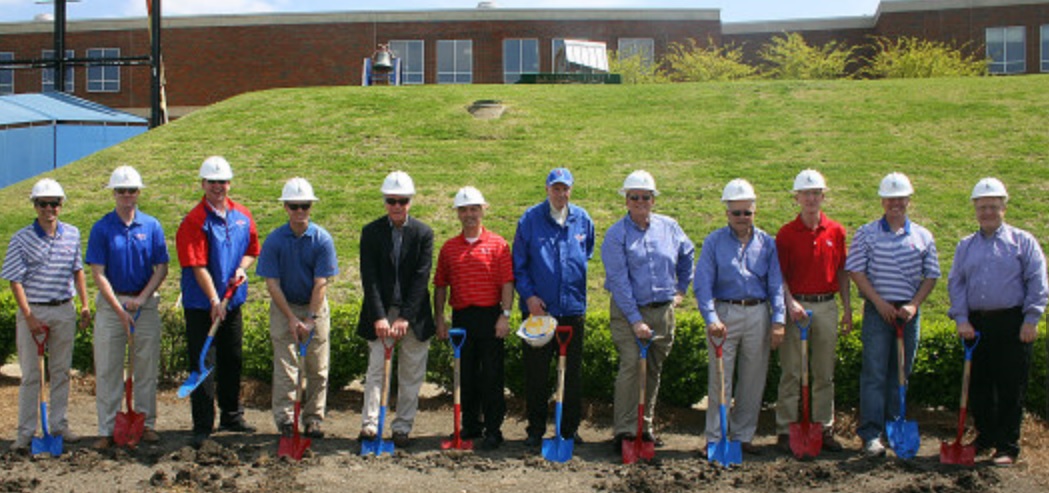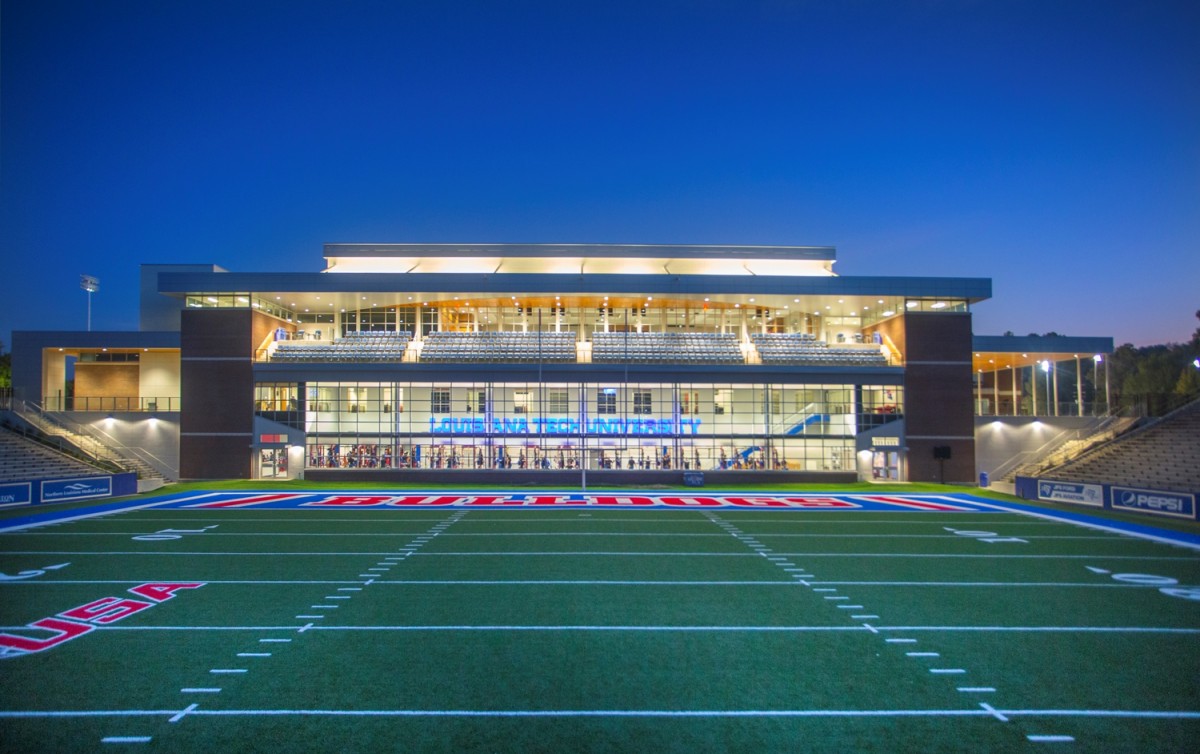When Tech’s Davison Athletic Complex broke ground in 2014, many fans were not happy. These hill fans went on message boards and Twitter to vocalize their displeasure, even after the building was finished:
@ST_IsabellaTNS The hill was better. 😒
— Boyd M (@Boydtoven) August 20, 2015
They were sad to see one of the landmark features of Louisiana Tech be taken away: The grassy hill in the south endzone of the football stadium. In the picture of the ground breaking below you can see its iconic feature-less features:
 As you can see, the iconic-ness of this hill is obvious. So why would Tech get rid of a glorious hill? To build the Davison Athletic Complex.
As you can see, the iconic-ness of this hill is obvious. So why would Tech get rid of a glorious hill? To build the Davison Athletic Complex.

This building is obviously inferior to an ordinary hill in every way. The building is a three story, 70,000 square foot facility full of workout rooms, coaches offices, and banquet halls. But the hill had a neat tunnel. The building reflects sound back into the stadium. But the hill had some cool grass on it. As I said before, obvious.
But football programs are obviously more than aesthetics of endzones. They are about winning and the success of student athletes off the field. So I will show why having a hill is better than having a stupid building.
The Data
Of the 128 FBS programs in America, the majority are bowled in or at least have some sort of stands in both endzones. Fifteen (15) schools have a bare hill in at least one endzone. These schools are:
Akron, Ball State, Baylor, Clemson, Colorado State, Navy, New Mexico State, Ohio, SMU, Troy, Louisiana-Lafayette, ULM, Virginia, Vanderbilt, and Western Kentucky.
Twenty-eight (28) schools have a building in at least one endzone:
Arkansas, Arkansas State, Bowling Green, Central Michigan, Cincinnati, East Carolina, Eastern Michigan, Louisiana Tech, Louisville, Marshall, Maryland, Miami of Ohio, Mississippi State, New Mexico, North Texas, Northern Illinois, Northwestern, Oklahoma State, Rice, Southern Miss, Texas State, Toledo, Tulsa, UMass, UNLV, Utah State, Wake Forest, and Washington State.
Wins
Here is a chart of all 43 programs with a building or hill and their wins over the 2017 season. This data includes bowl games and the playoff games.

As you can see, teams that have a hill won an average of .697 more games every year. While some may say that this is within the margin of error, I choose to believe that it proves my point.
But wins don’t tell the whole story, so let’s look at RPI.
RPI
RPI is one of the easier ways to rank teams. Below are the RPI rankings for both sets of schools.

Again, having a hill wins. On average, teams that have a hill in their endzone are ranked 6.65 spots higher in RPI. While this may not seem like a lot, if Tech was 6 spots higher, they would be ranked above Arkansas.
Conclusion
Based off of these statistics, having an endzone hill appears to make a team’s program slightly better. Common sense would say that it shouldn’t matter, but statistics don’t lie. The argument they are used to prove, however, isn’t necessarily true. Therefore, I can only come to one conclusion: The hill was better.

Pingback: This Post Brought to You by the Letter T – gtpdd
Pingback: What is gtpdd? – gtpdd
Pingback: 2018 gtpdd Season Preview – gtpdd
Pingback: gtpdd’s Rice Recap – gtpdd